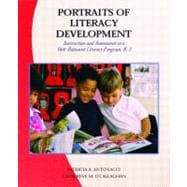
| The Foundations of Literacy Development in Young Children | |
| Building a Framework for Assessing Language and Literacy: The Development of Young Readers and Writers | |
| The Beginnings of Young Children's Literacy Development: The Framework for a Well-Balanced Literacy Program | |
| Oral Language Development in Young Children | |
| Linking Oral Language, Literacy Instruction, and Assessment at the Emergent Literacy Stage | |
| Linking Oral Language, Literacy Instruction, and Assessment at the Early Literacy Stage | |
| Linking Oral Language, Literacy Instruction, and Assessment at the Fluency Literacy Stage | |
| Instruction and Assessment for Literacy Development in Emergent, Early, and Fluent Readers and Writers | |
| Literacy Instruction and Assessment for Emergent Readers and Writers | |
| Literacy Instruction and Assessment for Early Readers and Writers | |
| Instructional and Assessment Strategies for Fluent Readers and Writers | |
| The Role of Phonics in Literacy Development within a Balanced Literacy Program | |
| Managing Literacy Instruction and Assessment in Diverse Classrooms | |
| Teaching All Children: Accommodating Differences in the Literacy Classroom | |
| Portfolio Assessment | |
| Appendix | |
| Table of Contents provided by Publisher. All Rights Reserved. |
The New copy of this book will include any supplemental materials advertised. Please check the title of the book to determine if it should include any access cards, study guides, lab manuals, CDs, etc.
The Used, Rental and eBook copies of this book are not guaranteed to include any supplemental materials. Typically, only the book itself is included. This is true even if the title states it includes any access cards, study guides, lab manuals, CDs, etc.